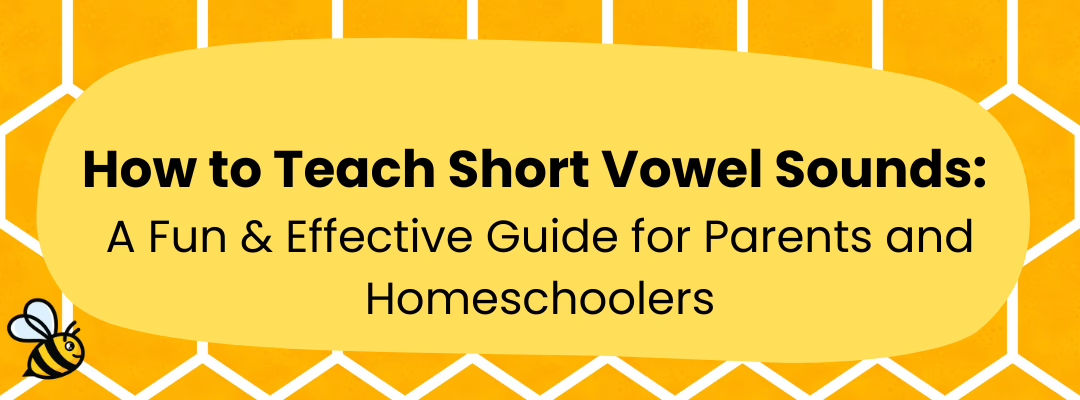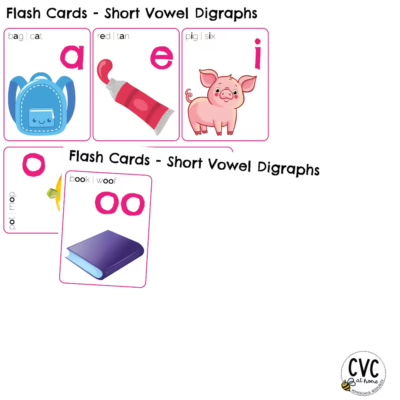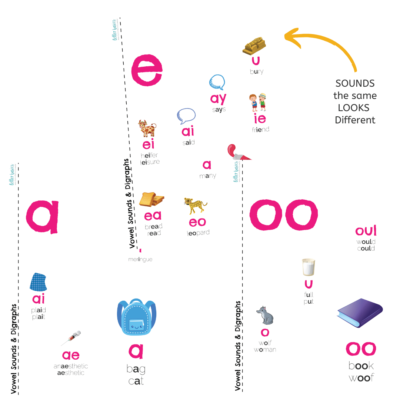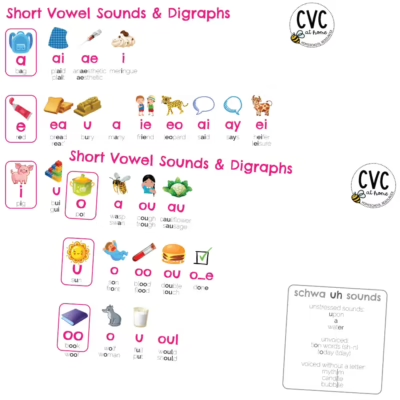Learning to read is one of the most exciting milestones in a child’s life—and mastering short vowel sounds is a big part of that journey.
Whether you’re a homeschooling parent or just looking to support your child’s literacy at home, this guide will give you simple, effective, and engaging ways to teach short vowel sounds.
Let’s break it down into easy steps, activities, and tips you can use right away!
How to Teach Short Vowel Sounds
🧠 What Are Short Vowel Sounds?
Short vowel sounds are the sounds that vowels make when they are not saying their names. For example:
- A as in cat
- E as in bed
- I as in pig
- O as in dog
- U as in cup
These are some of the first sounds children learn when beginning to read and spell.
They’re most often found in simple words with a consonant-vowel-consonant (CVC) pattern, such as hat, net, lip, pop, and sun.
📚 Step-by-Step Approach to Teaching Short Vowels
1. Introduce One Vowel Sound at a Time
Focus on just one short vowel sound during each lesson.
Start with short A (/a/ as in cat)—it’s easy to hear and pronounce.
Use:
- Visuals (flashcards or charts with pictures)
- Emphasis on mouth movement (show how lips and tongue move when making the sound)
- Simple example words: cat, bat, hat
2. Practice with CVC Words
CVC (consonant-vowel-consonant) words are the building blocks of early reading.
Once your child is familiar with a short vowel sound, introduce word families.
Examples:
- Short A: cat, mat, sat, rat
- Short E: bed, red, fed, net
- Short I: pig, big, dig, lid
- Short O: dog, log, hop, top
- Short U: cup, sun, bug, rug
Use magnetic letters, letter tiles, or write words on a whiteboard to build and blend the sounds together.
3. Incorporate Multi-Sensory Learning
Kids learn best when they’re actively engaged with their senses.
Try:
- Tactile: Writing letters in sand, salt trays, or shaving cream
- Auditory: Clapping or tapping out each sound in a word
- Visual: Colour-coded vowels in words (e.g., red for vowels)
These approaches reinforce learning in a fun and memorable way.
4. Sing Songs and Chants
Music is a powerful learning tool! Teach each vowel sound with a silly song or chant.
Example for short A:
🎵 “A says /a/, A says /a/, every letter makes a sound, A says /a/ like apple!” 🎵
Make up your own or find catchy phonics songs online (YouTube has plenty of free options!).
5. Play Sorting Games
Create a sorting game with pictures or words and ask your child to sort them by vowel sound.
Example:
- Print out pictures of a cat, net, sun, pig, and log
- Have your child sort them into groups by the middle vowel sound
This builds listening skills and helps reinforce sound recognition.
6. Read Simple Decodable Books
Use books that focus on short vowels and CVC words.
These are called decodable readers and are designed to build confidence as kids read real words they can sound out.
Recommended options:
- Bob Books (Start with Set 1: Beginning Readers)
- Flyleaf Emergent Readers
Your local library is a treasure trove of decodable readers.
Read together daily and celebrate small successes!
7. Use Minimal Pairs to Sharpen Listening
Minimal pairs are words that only differ by one sound (usually the vowel), such as:
- bit vs. bet
- cap vs. cup
- pin vs. pan
Say the words aloud and have your child point to the one they hear.
This sharpens their listening and helps them distinguish between similar vowel sounds.
🎲 Fun Activities to Reinforce Learning Short Vowel Sounds
- Vowel BINGO: Make or print a vowel BINGO game using pictures or CVC words.
- Mystery Bag: Fill a bag with objects that have short vowel sounds (e.g., a cup, a toy cat). Have your child pull one out and say its vowel sound.
- Vowel Hopscotch: Make a hopscotch board with vowels. Call out a CVC word, and your child jumps to the correct vowel.
- Digital Games: Use kid-friendly phonics games like Starfall, ABCMouse, or Boom Cards for practice.
✅ Tips for Success
- Go at your child’s pace—repetition is key!
- Mix learning with play to keep interest high.
- Model the sounds clearly—watch your mouth together in a mirror.
- Celebrate wins—praise effort, not just results!
💬 How to Teach Short Vowel Sounds
Teaching short vowel sounds doesn’t have to be boring or overwhelming.
With the right tools, a little creativity, and lots of encouragement, your child will be on their way to becoming a confident reader.
You’ve got this—and your child does too!
Recommended products
-
Stage 6 Flashcards: Short Vowel Digraphs
Original price was: $5.00.$1.00Current price is: $1.00. -
Stage 6 Pack: Short Vowel Digraphs
Original price was: $19.00.$9.00Current price is: $9.00. -
Stage 6 Placemat: Short Vowel Digraphs
Original price was: $5.00.$3.00Current price is: $3.00.




